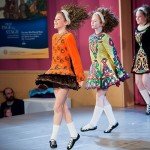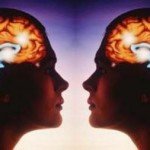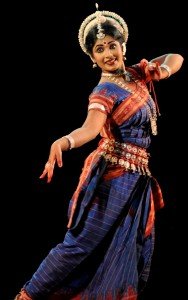Music and Neurosciences V – Blog 6 (Dance and the Brain)
Hello Dear Reader
Symposium 6 from this year’s Music and Neurosciences conference marked an interesting departure from the norm – it was entitled Dance and the Brain.
 In my book ‘You Are The Music’ I talk about the importance of music for dance and also discuss briefly the fact that it is a shame there are not more studies that are interested in both art forms.
In my book ‘You Are The Music’ I talk about the importance of music for dance and also discuss briefly the fact that it is a shame there are not more studies that are interested in both art forms.
It seems that now there are at least a couple of researchers seeking to address this gap in our understanding.
The first talk was by Emily Cross, who studies the impact on sensorimotor experience on the affective evaluation of movement. In other words, do professional dancers react differently when they watch dance compared to a non-dancer?
 Emily started out with a nice summary of research that links perception and action. Many of you will be aware of the idea of ‘mirror neurons’ – not everyone buys into this idea but the fact is that, whatever the neural mechanism, we understand actions by matching those directly observed actions onto our own motor system. This is how we make sense of moving around in the environment.
Emily started out with a nice summary of research that links perception and action. Many of you will be aware of the idea of ‘mirror neurons’ – not everyone buys into this idea but the fact is that, whatever the neural mechanism, we understand actions by matching those directly observed actions onto our own motor system. This is how we make sense of moving around in the environment.
Emily’s first study involved scanning the brains of ballet and capoeira dancers while they watched videos of both styles of dance. She identified a unique signature of activity that occured when the dancers watched their specialty, within the left ventral premotor cortex. This, she surmised, is an important centre for our action-observation brain network.
 There is an interesting and consistent finding when people watch dance moves and rate perceived difficulty and liking: the more difficult someone rates a dance move the more likely they are to enjoy watching it. Thanks to Emily’s research we now know that this relationship is associated with activation in the visual regions of the brain as well as the right parietal lobe, an area of the brain associated with sensori-motor engagement.
There is an interesting and consistent finding when people watch dance moves and rate perceived difficulty and liking: the more difficult someone rates a dance move the more likely they are to enjoy watching it. Thanks to Emily’s research we now know that this relationship is associated with activation in the visual regions of the brain as well as the right parietal lobe, an area of the brain associated with sensori-motor engagement.
Building on this finding, Emily conducted a few weeks training study using the X-box Kinect motion system to objectively score people’s dancing before, during and after a short period of training.
 After a person has completed training, the “wow” factor (liking difficult moves more) tends to dissipate. People who have new dance training like all movements and music more when they finish the training than before the training started. This is not true for people who only listen to the training music without doing any dancing – those people like the music less and less.
After a person has completed training, the “wow” factor (liking difficult moves more) tends to dissipate. People who have new dance training like all movements and music more when they finish the training than before the training started. This is not true for people who only listen to the training music without doing any dancing – those people like the music less and less.
Overall, this work shows how our physical experience – life-long training or just a few weeks of lessons – shapes our perception of dance. This change in our experience relies on a link between our sensori-motor life and our aesthetic preferences, which it will be interesting to further explore in music (and other art forms).
The second talk was by Krysta Hyde. I first knew about Krysta for her work on amusia, though more recently she moved into the study of music and autism. It seems she also enjoys dance and wanted to see if there were cognitive and neural differences between trained dancers and trained musicians.
 Her conclusion, perhaps not surprisingly, was that long-term dance training changes brain structure. All long-term training (in any domain) is likely to change brain structure but the question is, what are these changes and how do they compare to the kinds of changes that we tend to associate with long-term musical training?
Her conclusion, perhaps not surprisingly, was that long-term dance training changes brain structure. All long-term training (in any domain) is likely to change brain structure but the question is, what are these changes and how do they compare to the kinds of changes that we tend to associate with long-term musical training?
Krysta has scanned to date 20 contemporary dancers, 19 musicians and controls. She has been careful to match them all and to make sure that she gets ‘pure’ dancers (i.e. without any musical training) and ‘pure’ musicians (without any dance training).
She reported a number of structural differences, not all of which I had the time to write down. However, I noted white matter differences in the corpus callosum in the dancers, a finding which is already well replicated in trained musicians. There were also some differences in cortical thickness between the groups in auditory and motor areas, indicating that dancers show enhancement in some unique brain structures compared to musicians and controls but at the moment I think it is fair to say that these are quite subtle.
It seems the link between music and dance is just as close in the brain as it is in performance.
This stimulating symposium marked the end of the morning of Day 3, whereupon we all marched in the direction of lunch and the second poster session.
 I did not get much lunch as I wanted to see as many of the posters as possible before I presented in the following session. It was rather annoying that the posters had to be cleared away as soon as the session ended as it meant I could not see many of them for very long. I prefer when posters are left up all day for casual browsing.
I did not get much lunch as I wanted to see as many of the posters as possible before I presented in the following session. It was rather annoying that the posters had to be cleared away as soon as the session ended as it meant I could not see many of them for very long. I prefer when posters are left up all day for casual browsing.
But I made the best of the situation and luckily some kind people brought me the odd bit of food and fruit juice during my poster presentation to keep me going 🙂
My poster presented a collaboration with my colleagues from my previous institution (Goldsmiths: Georgina Floridou and Lauren Stewart) and showed our brand new earworm induction paradigm, what I took to calling the ‘Pretty Woman Paradigm’ – nothing to do with me, Dear Reader…it features Julia Roberts 🙂
If you would like to know more then you can download my poster here.